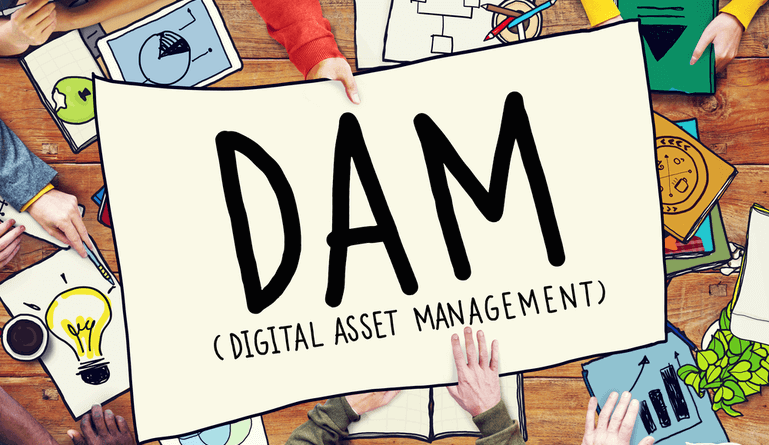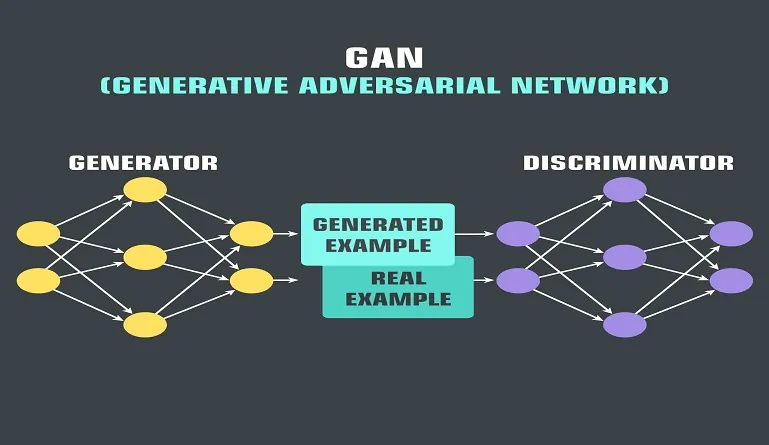If you’re a user that already uses digital asset management as a means for a secure repository, then kudos to you for facilitating this effective system of protecting your digital assets. Praises aside, the use of digital asset management can help improve operations to your assets and peak performances.
Based on a market overview analysis from mordorintelligence.com(1), it’s been stated that the Digital Asset Management Market will reach $7,756.1 million by 2025. If this doesn’t prove the innovation of well-managed business of the 21st century, then we’re not sure what else will. All in all, it’s with great certainty that DAMs can save your company within a span of five years.
Curious to find out the wonders of digital asset management? Stay tuned with what’s more to come.
Digital Asset Management (DAM)
The term Digital Asset Management, or DAM, refers to the collection of digital assets stored within a central location of a device. Examples of digital assets include:
- Photographs
- Videos
- PDF files
- Documents
- Design files
- Presentations
- Company brandings
- Marketing content
If you deem these following digital assets as significant to your business, then stick around for more benefits of establishing a digital asset management system for your files.
Why is Digital Asset Management Important?
DAMs provide secure storage for all of your digital assets. If you think about it, what is a better way to safely store all of your marketing content and other digital assets? Digital asset management systems do just that and even enhance your creative process.
Functions of Digital Asset Management
There are plenty of functions to digital asset management. However, one of the most important reasons to mainly focus on would be its ability to securely manage your business assets.
Because it’s the ultimate storage solution for your digital content sharing system, it’s no secret that this is by far an essential feature to a DAM. Not only will it help manage digital assets effectively, but it will also cost less to invest. Overall, it’s safe to say that DAMs lead to good business practices.
-
File Sharing and Access Anytime, Anywhere
Because DAMs are cloud-based, the number one overall function that it provides is the feature to share files wherever and whenever. These types of DAM systems are cheaper and efficiently quicker due to its network of remote servers and easy access to web browsers.
-
Simple and Straightforward Organization
DAMs are designed to have a simple organization. Because everything is located in a centralized place, it’s easier to find files of your digital assets. This can benefit your team since one place is better than accessing assets in multiple locations, which can be overwhelming.
-
Company Content from One Place
Another perk for files being located in one place is that it’s easier for members of your team to collaborate, share, and create ideas within a DAM system. Yes, it’s possible to do all these tasks in one place.
-
Files Can Be Found Fast
Because of its structured organization and practicality, DAMs make it easier for files to be found. So, no more looking into a folder within a folder, a whole other section for one file. Digital asset management has you covered when it comes to putting everything in one place for you.
-
Rich Media Asset Management (RMAM)
This means that DAMS are compatible with rich media, which include creating videos, audio, and images. Digital asset management systems have the ability to let users get a larger preview of your saved files.
-
Manage Your Brand Correctly
Brand consistency is key to keeping up with your marketing. With digital asset management, businesses can effortlessly manage their brands designed for users. Features of a DAM also allow effective management for your brand and can also enable customization for pages as well as obtainable access to files helpful for key collaborators.
-
Digital Publishing and Distribution
What more can you ask from digital asset management systems? Well, for one it’s easy publishing and distribution your digital assets. Since DAMs can keep everything in one place, digital publishing tools can also be available in one location.
However, the best function that you can take advantage of when having a digital asset management system is to expand your assets onto more distribution services such as 3PL providers.
Types of Digital Asset Management
-
Brand Asset Management (BAM)
Refers to the management of securing branded assets within a centralized database. This type of digital asset management implements modifications, edits, consults, and updates in order to execute the management of digital brands.
-
Library Asset Management (LAM)
This type of asset management generally refers to the bulk of storage that one keeps within a database. Assets can include an archive or a library filled with all types of media such as photos and videos.
-
Production Asset Management (PAM)
PAMs, or production asset management, are specifically used for digital or visual assets involving any type of production for films, TV shows, video games, and all types of live media action.
-
Cloud-based Digital Asset Management (CDAM)
The most common kind of digital asset management. Cloud-based storage allows users to use digital assets that have been backed up and stored into a secure archived within your DAM system. With a cloud-based solution, more companies have more creative advantages and easier access to succeed with their content management processes.
Who Uses Digital Asset Management?
There are multiple users that benefit from DAM systems. These users are referred to as internal and external users.
Internal Users
Internal users refer to users who work within an organization or a business. They typically use content and information from the DAMs on a regular basis. Below are examples of departments that are considered internal users.
- Creatives: This can include graphic designers and photographers who want to have everything in one place, especially content that they’ve created. Another asset that creatives will have access to our other types of content relating to the company that can be used for product distribution. Creatives use mainly digital asset management systems for their tools.
- Marketing: With the creative department, marketing also has access to DAMs because of the operations that go within promoting and creating a product. Digital asset management systems are like the bible for marketers because they can rely on all of the digital content that is stored within the database that can possibly create a successful campaign.
- Sales: Just like marketing, sales also use digital asset management as a building block for marketing. Not only that, but sales departments can use DAMs to their advantage due to the content that they can distribute and review into the database such as sales pitches, and other types of promotional content.
- Packaging: DAMs are also great for packaging assets. This can provide the ability to track package processing as well as regularly update its appearance. Overall, some digital asset management systems can offer tools that can let you view content in a 3D form, which can be a reason why packaging users tend to use digital asset management software as an alternative to organizing all types of assets.
- IT: Tech professionals or IT professionals will mainly use DAMs to track data and ensure that it’s being used correctly. Hence, it’s important that your company appoint a DAM manager that can also collaborate with IT professionals when it comes to integrating other systems with your digital asset management system.
- Legal: As for legal teams, digital asset management can be used to track down other users that download prohibited content. The main reason legal teams use DAMs is to maintain proper rights to digital assets that your company owns. They also use digital asset management systems to overlook expiration dates to said digital assets.
External Users
External users also have access to these DAMs, but not as frequently as internal users. Below are the following types of external users.
- Agencies: Without digital asset management, agencies wouldn’t be able to have access to digital content such as photos and logos for branding. Agencies can use DAMs as a tool to execute campaigns.
- Distributors: When promoting or selling products, distributors need digital asset management systems in order to perform such tasks. Because they distribute to other businesses, DAMs are the most effective way to go when using images to promote said products for your business.
- Partners: Partners for your business use DAMs in order to collaborate with you. Since digital asset management is a remote tool, this can allow you to work with your partners effectively throughout projects.
The Benefits of Digital Asset Management
-
Finds digital assets fast without any training
It’s no secret that DAMs are pretty secure and provide fast access to all your digital assets. Yes, when it comes to digital asset management no training is required. It’s a very simple concept, and better for you and your team members to figure out fairly quickly.
-
Makes asset navigation simple and intuitive
This can’t be emphasized enough especially when companies want to look for management systems that are easy to use and compatible with their work environment. Moreover, whether cloud-based or brand asset-based, DAMs were designed to store all of your assets in one place.
-
Helps avoid re-creating digital content that already exists
With DAMs, you can create your own and unique creation. This means that because of the tools and features that come with a digital asset management system, your business has the ability to avoid recreating existing digital content. After all, no one likes a copycat. Everyone prefers originality over commonality.
-
Prevents digital assets from going unused
Because there’s a tendency to place everything in one location, digital assets within DAMs can be prevented from going unused meaning that everything doesn’t go to waste. There are plenty of pieces of content that can go unused, which is why DAMs make this issue less likely to occur.
-
Enables access to share files on any device anytime and anywhere
DAMs also have the ability to feature enabled access on any device. You can access any type of digital asset that’s stored in the system almost anywhere and on your own time. Thank god for remote access to any device!
-
Helps create and communicate digital assets from one place
I mean it should be easy when everything is in one place, right? DAMs offer this advantage because of its secure storage.
-
Makes it easier for distribution across multiple platforms
When it comes to digital asset management, you’re making it easier for your business by distributing to different platforms. This would include third-party platforms, social media, and even content management systems.
Because the organization is pretty simple and straightforward, you won’t have such a difficult time when it comes to posting content amongst all types of platforms.
-
Maintains brand consistency
DAMs can help you stay consistent with your brand because of its convenient system. You as a business can maintain brand consistency due to the tools that digital asset management tools offer. All of these said features can assist in keeping you on track with brand management as well as other digital content that you have on file.
-
Identifies opportunities for repurposing digital assets
With a DAM, you can seek more opportunities that can allow you to repurpose your digital assets. Instead of posting the same exact content on multiple platforms, posting similar content to the relevant topic would be better for your content management.
DAMs can allow this because it prevents you from posting the same exact things and allow you to create unique content for you to post on multiple platforms.
-
Analyzes how assets are performing, where they’re being used, and who is using them
Probably one of the most beneficial features of having a digital asset management system. Every business wants to know their asset performances, who use them, and where they are being used. It’s easier with DAMs because you can find out the numbers in your analytics as well as the locations of your main users.
-
It enhances knowledge management strategy and ability to turn tacit knowledge into explicit knowledge
Overall, digital asset management enhances your knowledge of management strategy. Think of it as a new way of digital marketing management. Implementing a digital asset management system in your life will allow your business to broaden its ideas and learn as you go throughout the world of content management.
Yes, there have been plenty of benefits that come with DAMs. However, there can be some setbacks to look out for before investing in a digital asset management system.
( Also Read: Overcoming Digital Asset Management Challenges )
Top Digital Asset Management Use Cases
-
Improves Analytics and Delivers Insights
Using DAMs can allow you to improve on your numbers in analytics as well as provide more insights into your content. When managing digital assets, take advantage of this benefit because it can help facilitate the organization as well as creation more effectively.
-
Keeps Content Secure, and More
Another helpful quality to keep in mind about DAMs is the idea of its secure storage capacity. With DAMs, you can keep all of your digital content safe and secure. Businesses tend to lean towards this type of decision in digital marketing due to its convenience, and effective business practice.
-
Improves Collaboration
Aside from being a digital content storage system, DAMs can also improve your collaboration between you and other team members within your workplace. Since content tends to stay in one location, it’s easier for other members of your team to obtain the files and other digital assets that they need in order to succeed at tasks.
-
Enables Users to Find Assets Faster
You should let users have easy access to said digital assets. Doing so will allow them to find such content faster since it’s in one place. When content tends to be located in one place, it makes your overall system less complicated since searching up files won’t be too much of a hassle.
-
Speeds up time-to-time market
DAMs are capable of helping your company thrive in a market where trends constantly change. With modern technology taking over the marketing industry, DAM systems have allowed businesses to keep up to date with such marketing trends. Because of its compatibility with other channels, it’s safe to say that having a DAM for your business can speed up the process for your marketing campaigns.
-
Eliminates the risk of license non-compliance
Non-compliance agreements can lead to complex situations such as becoming liable to pay fines for not having rights over all types of media. When this happens, DAMs eliminate that risk factor making it easier to stay on track with responsibilities involving compliance over photos, videos, and logos for your brand. Overall, having a data asset management system can really save your brand’s reputation.
How Will Digital Asset Management Systems Advance in the Future?
-
Artificial intelligence (A.I.)
With new technical features such as visual searches, location marketing, and A.I, DAMs can advance within the digital marketing world with just the sound of your voice. Although more products such as IoT devices currently have A.I. install in their systems, it’s never too late for digital asset management systems to join the party. After all, the best way to help users get around nowadays is through the enhancement of A.I. and other automated bot systems.
-
Working automation
Automation can make tasks effectively. With working automation, digital asset management systems can excel within its process in content management. It can frequently perform tasks in a routinely-like fashion, making it less demanding for humans to do such tasks on their own. With automation, a company can have more flexibility and work faster.
-
Business intelligence
The assistance of business intelligence is vital to digital asset management systems. Applying business intelligence into your system can create more opportunities for your business to explore. For example, data from analytics can help broaden consumer research as well as conserve or curate the content within your DAM software.
Final Thoughts
Companies should implement digital asset management into their networks. Believe it or not, it’s more beneficial for them in the long run. Because it’s a company’s job to keep up within their industry and better themselves for the sake of its market, it’s safe to say that DAMs are a pretty good asset to invest in.
It’s effective, fast, and practical for anyone who needs access to digital assets, especially companies who mainly focus on digital marketing. Furthermore, this is an excellent tool to use for file storage as well as a great benefit for digital distribution.
Other Useful Resources:
Why Should Business Invest Invest in Digital Asset Management





